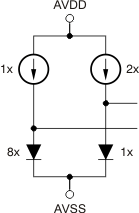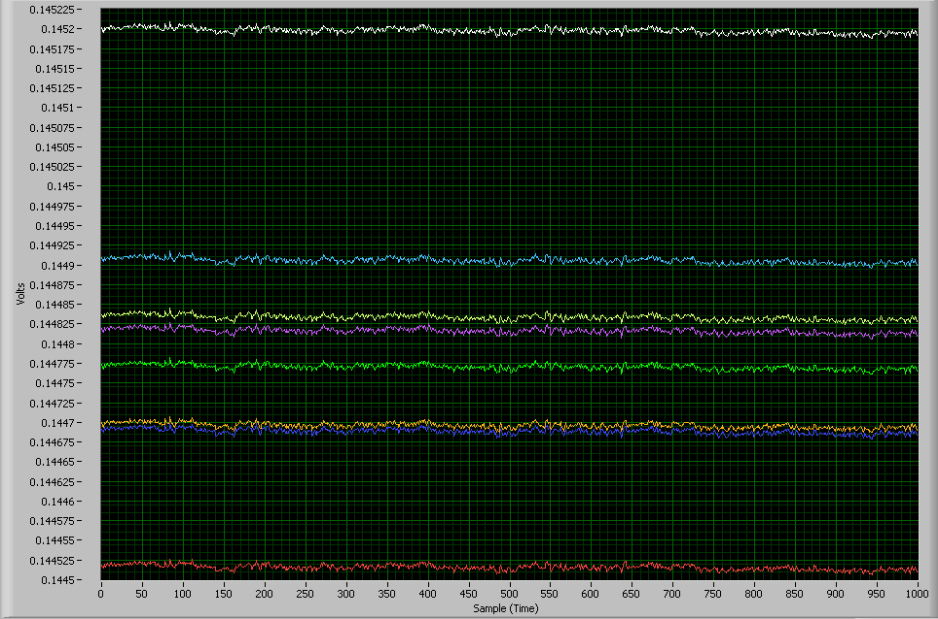SBAU171D May 2010 – January 2016 ADS1198 , ADS1298
-
ADS1298ECG-FE/ADS1198ECG-FE
- Trademarks
- 1 ADS1298ECG-FE/ADS1198ECG-FE Overview
- 2 Quick Start
- 3
Using the ADS1298ECG-FE Software
- 3.1 Application User Menu
- 3.2 Top-Level Application Controls
- 3.3 About Tab
- 3.4 ADC Register Tab
- 3.5 Analysis Tab
- 3.6 Save Tab
- 4 ADS1x98ECG-FE Input Signals
- 5 ADS1298ECG-FE/ADS1198ECG-FE Hardware Details
- ASchematics, BOM, Layout, and ECG Cable Details
- BExternal Optional Hardware
- CSoftware Installation
4.3 Temperature Sensor
The internal temperature sensor on the ADS1298 is shown in Figure 32. When the internal MUX is routed to the temperature sensor input, the ADC internal temperature is calculated from the ADC output voltage using Equation 1.
 Figure 32. Internal Temperature Sensor
Figure 32. Internal Temperature Sensor Equation 1. 

The ADC can be configured to give a temperature reading by selecting the Temperature Sensor option on the Channel Control Registers GUI (see Section 3.4.2.2) and verified using the Scope tab as shown in Figure 33. The number 0.1447V (on the y-axis) can be calculated as a temperature using Equation 1:
Temperature = (0.1447 – 0.145300) / 0.00049 + 25 = 23.78°C
A more detailed description of the Scope tab is provided in Section 3.5.1. Figure 33. Eight-Channel Read of Internal Temperature
Figure 33. Eight-Channel Read of Internal Temperature